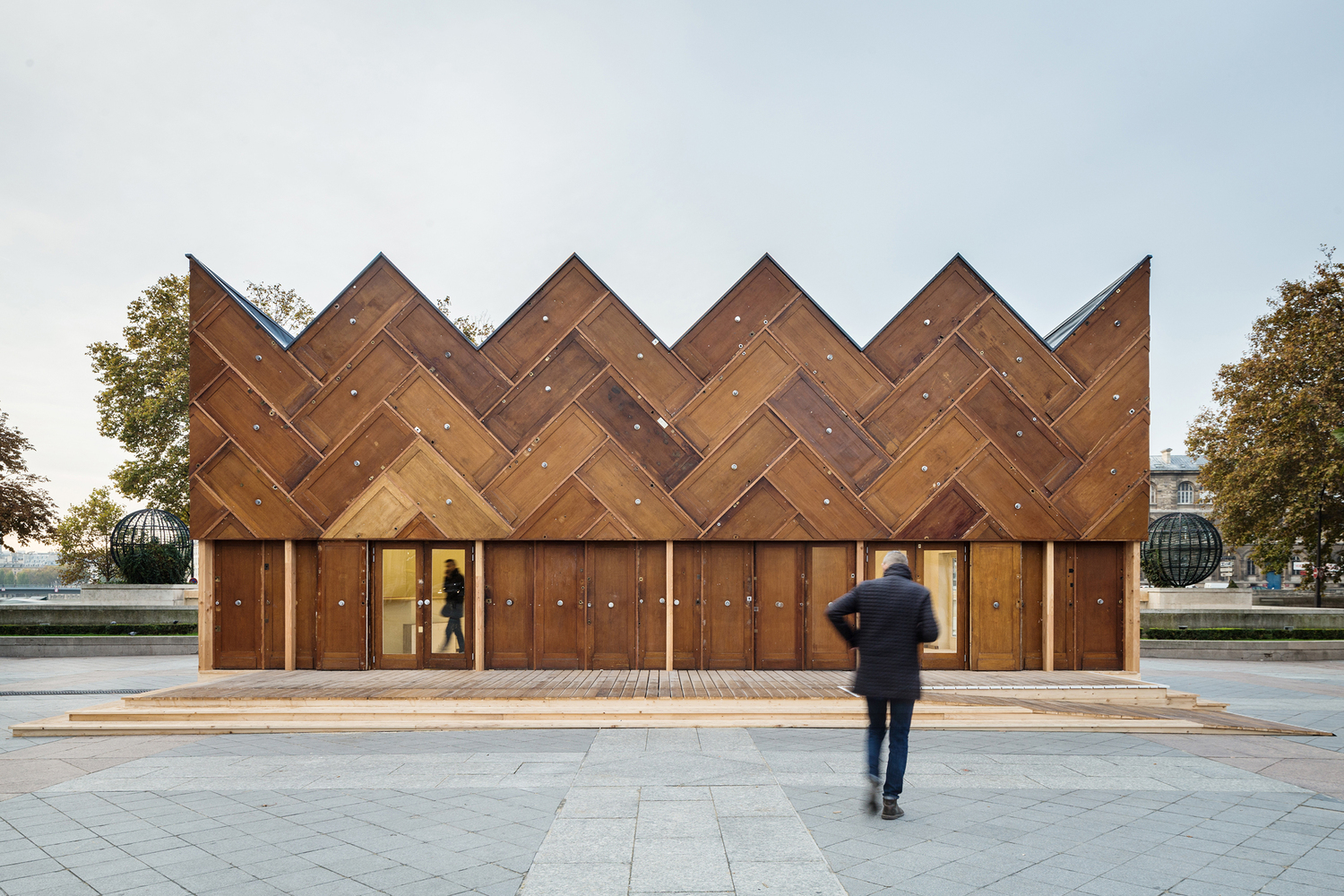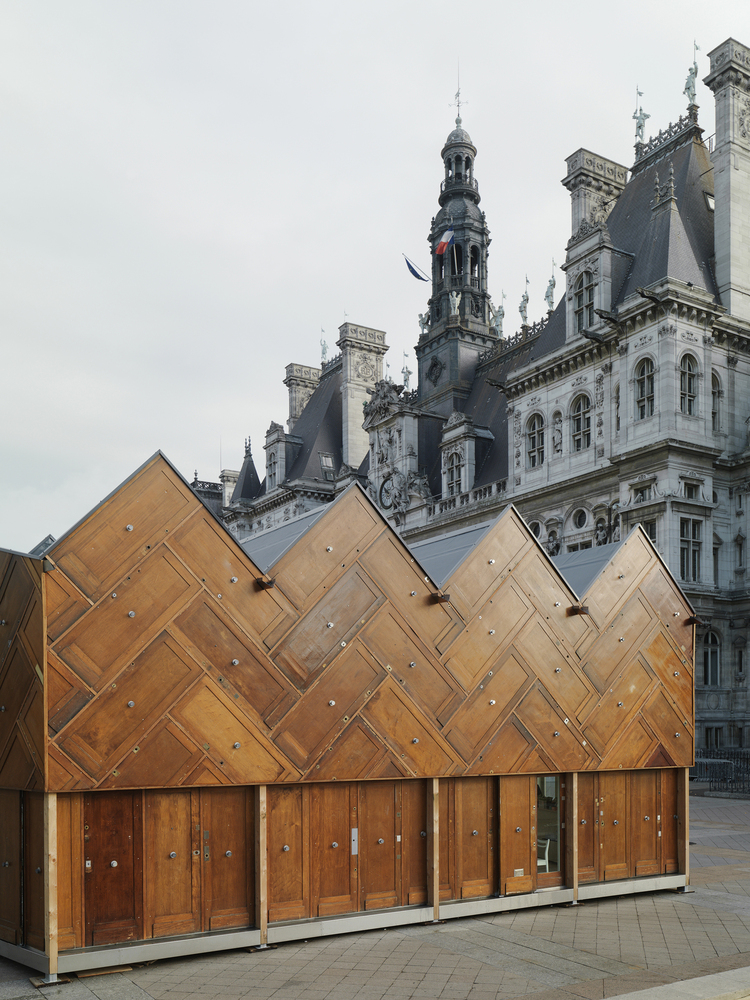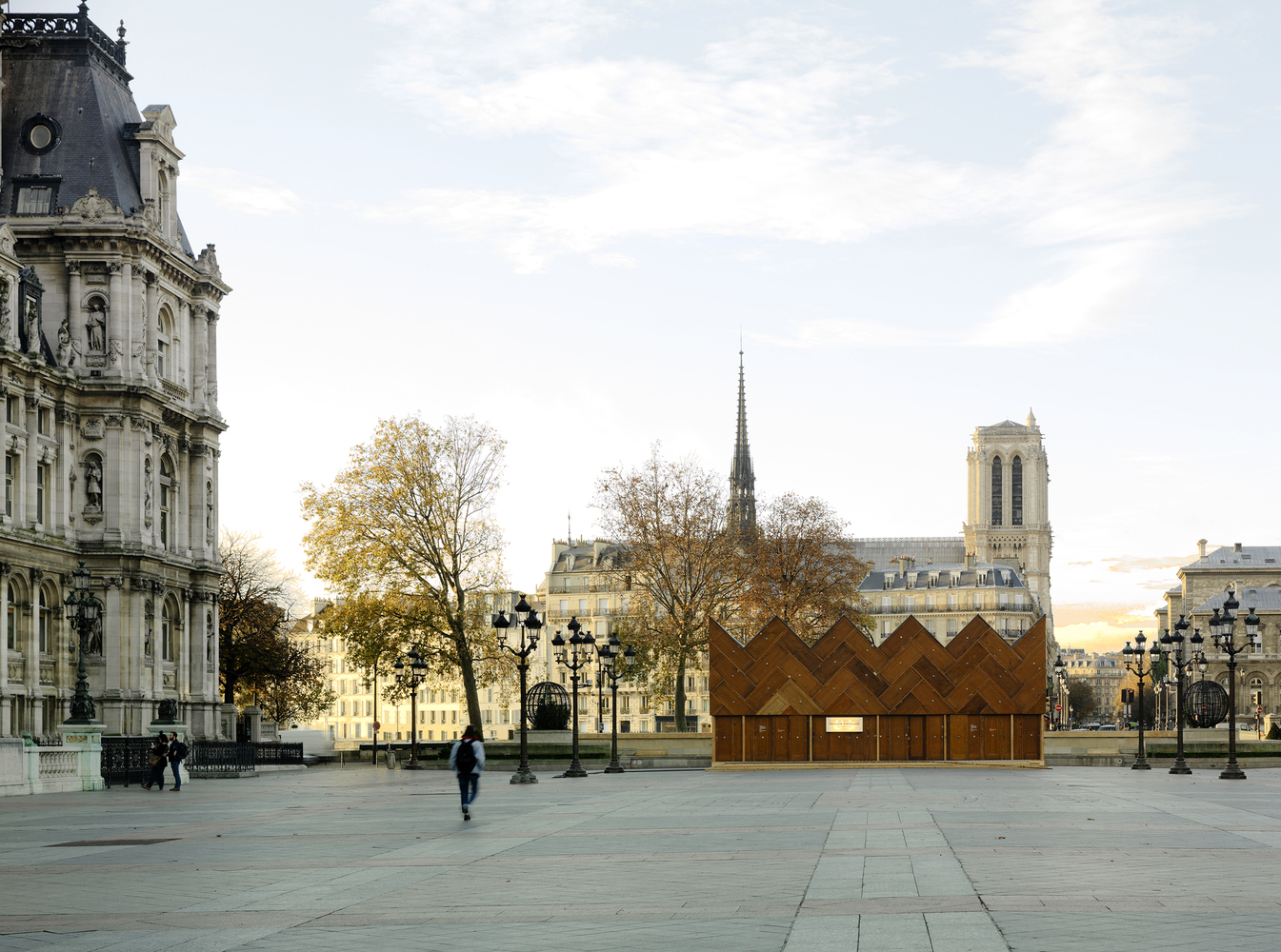Case Study
Le Pavillon Circulaire

© Cyrus Cornut

© Cyrille Weiner

© Cyrille Weiner

© Encore Heureux Architectes

© Encore Heureux Architectes
Details:
Location: Paris, France
Year: 2015
Design team: ENCORE HEUREUX ARCHITECTES (lead architects) + TRIBU (environmental quality – HQE) + BONNEFRITE (illustrations) + CAMPING DESIGN (graphic design) + VILLE DE PARIS / DIRECTION DE L’ARCHITECTURE ET DU PATRIMOINE – SERVICE TECHNIQUES DES BÂTIMENTS TERTIAIRES (STGCAI, SABA, SALPA) (interior works)
Program: Exhibition/Culture
Reuse info:
Facade: 180 wooden doors from a building rehabilitation project.
Insulation: Rock wool removed from a supermarket roof renovation.
Wooden Structure: Materials from a retirement home construction site.
Floor & Walls: Recycled exhibition panels.
Terrace Grating: From the Paris Plage operation.
Furniture: 50 wooden chairs salvaged from Parisian waste dumps, repaired and repainted.
Lighting Fixtures: Reused public lighting stocks.
Project:
[Text description translated from the project statement on the official website of Encore Heureux Architectes – All rights to the content belong to the original author]
A small and unique construction, the Pavillon Circulaire is not round. Its name reflects the manufacturing process that led to its creation, following the principles of the circular economy, where one person’s waste becomes another’s resource. Located at the Hôtel de Ville in Paris for COP21, this pavilion is an architectural experiment centered on the reuse of building materials. Here, 60% of the materials used have already had a previous life. The Pavillon Circulaire is both an exhibition space and a hands-on experiment built around the reuse of materials.
The façade consists of 180 wooden doors, taken from the rehabilitation of a housing building. The rock wool used for interior insulation was salvaged from the roofing of a supermarket. The wooden structure comes from the leftovers of a retirement home construction site. The floor and walls are made from old exhibition panels, while the exterior decking is repurposed from the Paris-Plage project. As furniture, fifty wooden chairs were collected from Parisian waste disposal sites, repaired, and repainted, while the four large pendant lights were salvaged from public lighting stocks. Except for the framework and waterproofing, the finishing work was done by the city’s technical service workshops.
--
After its temporary installation on the parvis of the Hôtel de Ville during COP21, the Circular Pavilion was dismantled in early 2016. In line with the circular economy principles that guided its conception, it was later reassembled in Paris’ 14th arrondissement, where it now serves as a clubhouse for a local sports association.
--
© Image credits: Encore Heureux Architectes. Photographer credits are provided in the image captions.